The Oriental Rugs ClipArt gallery offers 123 illustrations of oriental carpets, including patterns often seen on oriental rugs, as well as weave techniques.

Caucasian Border Design
The Caucasian Border Design. So called by the author because it is seldom found in any but the Caucasian…

Caucasian Border Design
The Caucasian Border Design. So called by the author because it is seldom found in any but the Caucasian…

Caucasian Border Design
The Caucasian Border Design. So called by the author because it is seldom found in any but the Caucasian…
Chichi Border Design
The Chichi Border Design. Usually consists of an eight-petaled flower arranged on the alternate steps…
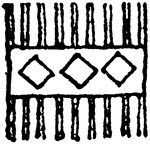
Comb Design
An emblem of the Mohammedan faith to remind the devout that cleanliness is next to godliness. For this…
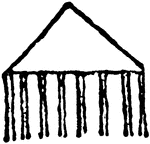
Comb Design
An emblem of the Mohammedan faith to remind the devout that cleanliness is next to godliness. For this…
Crab Design
A border design having the appearance of a series of crabs with their claws extended. Very common in…
Fret and Key
Chinese Fret, Greek Fret, and Greek Key border designs. This is suggested by the overlapping of the…
Fret and Key
Chinese Fret, Greek Fret, and Greek Key border designs. This is suggested by the overlapping of the…
Greek Meander
A border design also known as the zigzag, the wave crest, or the water motif. It consists of a series…
Herati Design
Also known as the fish, twin fish and Feraghan designs. Better known as the Herati. It originated in…

Herati Design
Also known as the fish, twin fish and Feraghan designs. Better known as the Herati. It originated in…

Herati Design
Also known as the fish, twin fish and Feraghan designs. Better known as the Herati. It originated in…

Herati Design
Also known as the fish, twin fish and Feraghan designs. Better known as the Herati. It originated in…

Herati Design
Also known as the fish, twin fish and Feraghan designs. Better known as the Herati. It originated in…
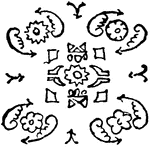
Herati Design
Also known as the fish, twin fish and Feraghan designs. Better known as the Herati. It originated in…
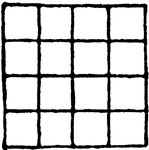
Knot of Destiny Design
This design dates back to Solomon's time. It is one of the Chinese Buddhist ornaments and is therefore…
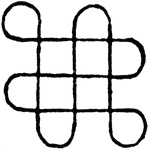
Knot of Destiny Design
This design dates back to Solomon's time. It is one of the Chinese Buddhist ornaments and is therefore…
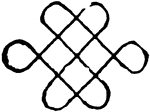
Knot of Destiny Design
This design dates back to Solomon's time. It is one of the Chinese Buddhist ornaments and is therefore…
Kulah Destiny Design
Claimed by some to have originally been intended to represent an alligator. There are exceedingly few…
Kulah Destiny Design
Claimed by some to have originally been intended to represent an alligator. There are exceedingly few…

Lamp Figures
Crude figures of lamps, like miniature tea-pots, often hang from the prayer niche of the Turkish prayer…
Lattice Design
Also known as trellis, diaper, and network. These names are applied to any design which is repeated…
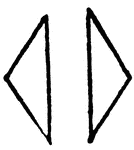
Link Design
Link in Lozenge or Spiral is a combination of two triangles with one side of each parallel with the…
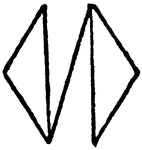
Link Design
Link in Lozenge or Spiral is a combination of two triangles with one side of each parallel with the…

Lotus Design
Very much resembles our pond lily with the exception that the color is of a brilliant purple on the…
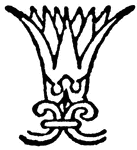
Lotus Design
Very much resembles our pond lily with the exception that the color is of a brilliant purple on the…

Lotus Design
Very much resembles our pond lily with the exception that the color is of a brilliant purple on the…

Lotus Design
Very much resembles our pond lily with the exception that the color is of a brilliant purple on the…

Lotus Design
Very much resembles our pond lily with the exception that the color is of a brilliant purple on the…
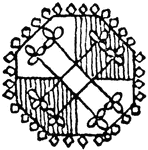
Octagon Design
Represents the eight directions of location and is found in Turkoman, Chinese, and Caucasian products.…
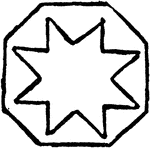
Octagon Design
Represents the eight directions of location and is found in Turkoman, Chinese, and Caucasian products.…
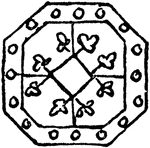
Octagon Design
Represents the eight directions of location and is found in Turkoman, Chinese, and Caucasian products.…

Pear Design
"Also known as the cone, the palm leaf, the river loop, the crown jewel, the seal, the almond, the feather,…
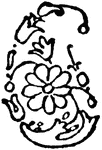
Pear Design
"Also known as the cone, the palm leaf, the river loop, the crown jewel, the seal, the almond, the feather,…

Pear Design
"Also known as the cone, the palm leaf, the river loop, the crown jewel, the seal, the almond, the feather,…

Pear Design
"Also known as the cone, the palm leaf, the river loop, the crown jewel, the seal, the almond, the feather,…
Pear Design
"Also known as the cone, the palm leaf, the river loop, the crown jewel, the seal, the almond, the feather,…
Pear Design
"Also known as the cone, the palm leaf, the river loop, the crown jewel, the seal, the almond, the feather,…


